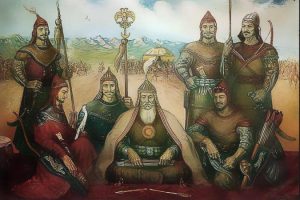The Winter War, also known as the Russo-Finnish War, was a significant conflict that took place between Finland and the Soviet Union from November 30, 1939, to March 13, 1940. This brutal conflict, which lasted for approximately three months, showcased Finland’s determination, resilience, and ability to defend its independence against a much larger and powerful neighbor. This article will delve into the causes, major events, and the lasting impact of the Winter War.
Causes of the War: The origins of the Winter War can be traced back to the territorial disputes between Finland and the Soviet Union. The Soviet Union, under Joseph Stalin, sought to secure its northwestern borders by annexing territories belonging to Finland. Despite Finland’s attempts to negotiate, the Soviet Union demanded significant territorial concessions, which Finland could not accept without compromising its independence. Diplomatic efforts failed, leading to the outbreak of hostilities.
Major Events:
- Soviet Invasion: On November 30, 1939, the Soviet Union launched a massive invasion of Finland, expecting an easy victory. However, the Finnish defense forces, consisting of well-trained soldiers and guerrilla tactics, put up a fierce resistance. The Finnish army’s intimate knowledge of the terrain and their effective use of camouflage and hit-and-run tactics allowed them to inflict heavy casualties on the Soviet forces.
- The Siege of Leningrad: As the war progressed, Finland launched a counteroffensive against Soviet-held territories. The Finnish army laid siege to the city of Leningrad (now St. Petersburg), aiming to divert Soviet attention from the ongoing conflict. Although the siege did not result in a Finnish victory, it tied down significant Soviet resources and showcased Finland’s military capabilities.
- The Moscow Peace Treaty: The Winter War came to an end with the signing of the Moscow Peace Treaty on March 13, 1940. The terms of the treaty were harsh for Finland, as it resulted in significant territorial losses. Finland had to cede substantial territories, including the entire Karelian Isthmus and parts of Finnish Lapland, to the Soviet Union. Despite the territorial losses, Finland managed to maintain its independence, which was seen as a moral victory for the Finnish people.
Impact and Legacy:
- Finnish Resilience: The Winter War demonstrated the extraordinary resilience and determination of the Finnish people. Despite being heavily outnumbered and outgunned, Finland’s fierce resistance created an international admiration for their tenacity and spirit.
- Strengthened National Identity: The war solidified Finland’s national identity and fostered a sense of unity among the Finnish people. The defense of their homeland against a superior adversary became a defining moment in Finnish history, strengthening their resolve to protect their independence at all costs.
- Lessons Learned: The Winter War highlighted the importance of military preparedness and the significance of defensive tactics. Finland’s effective use of guerilla warfare and their ability to exploit the harsh winter conditions provided valuable lessons for military strategists around the world.
- Continuation of Conflict: The Winter War did not mark the end of Finnish-Soviet tensions. Less than two years later, Finland found itself embroiled in the Continuation War (1941-1944) when it allied with Nazi Germany against the Soviet Union during World War II. The legacy of the Winter War influenced Finland’s decisions during the subsequent conflicts.
Conclusion: The Winter War was a pivotal event in Finnish history that tested the nation’s resilience and determination. Despite the unfavorable outcome in terms of territorial losses, Finland’s defense against the Soviet Union garnered international respect and admiration. The lessons learned from this conflict shaped Finnish military doctrine and fostered a strong sense of national identity



















Add Comment